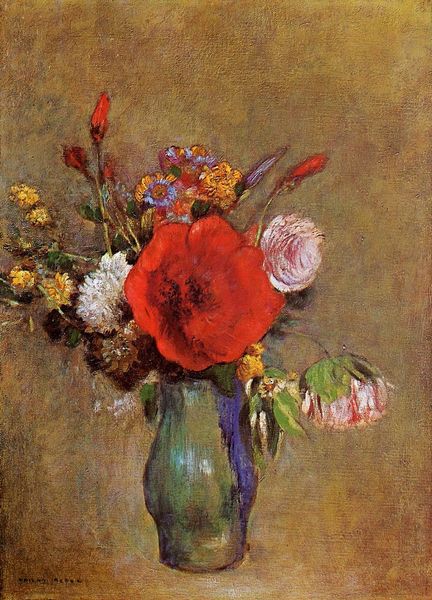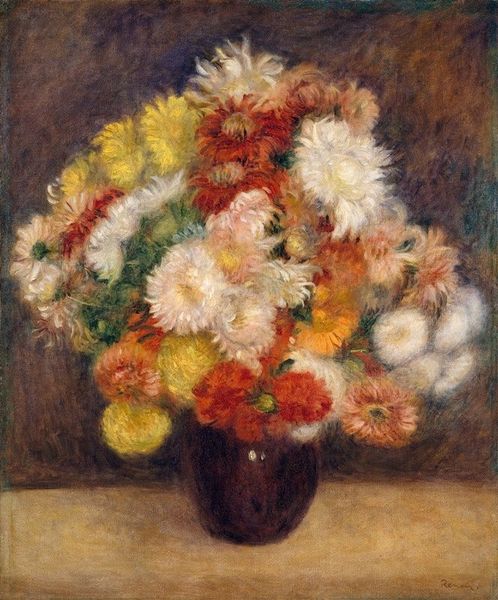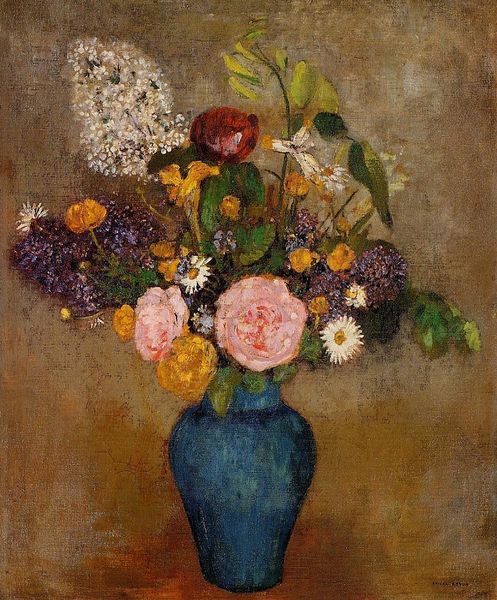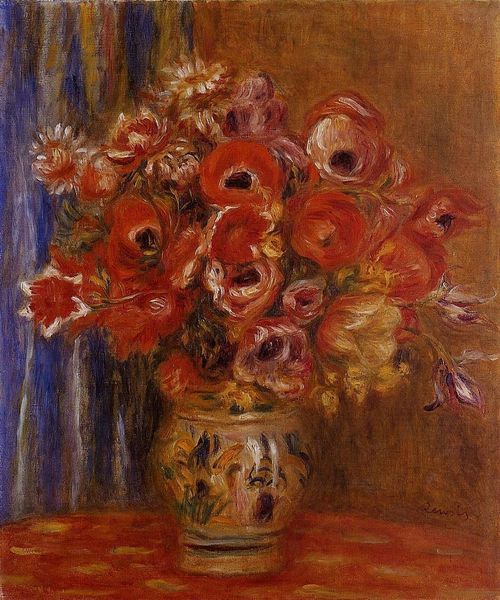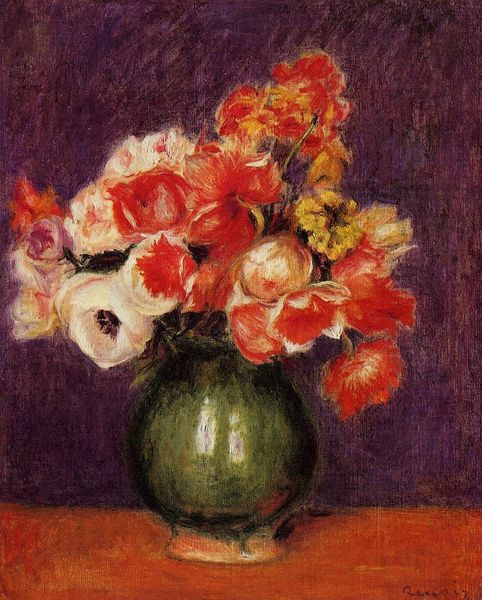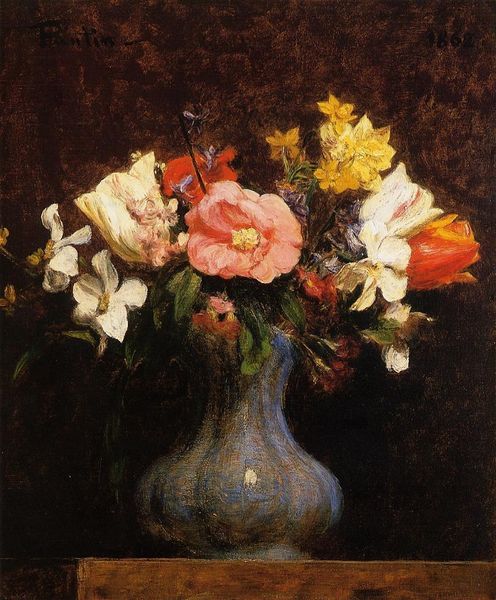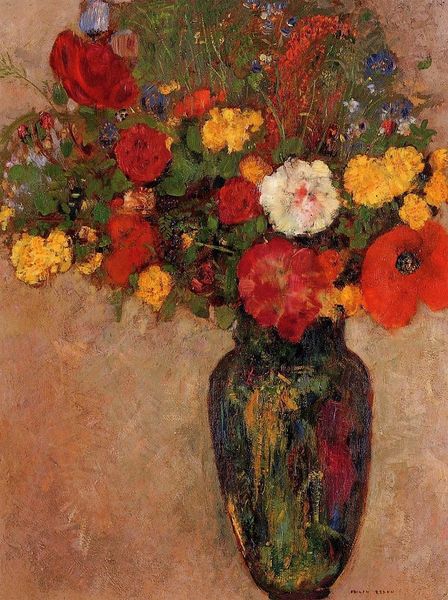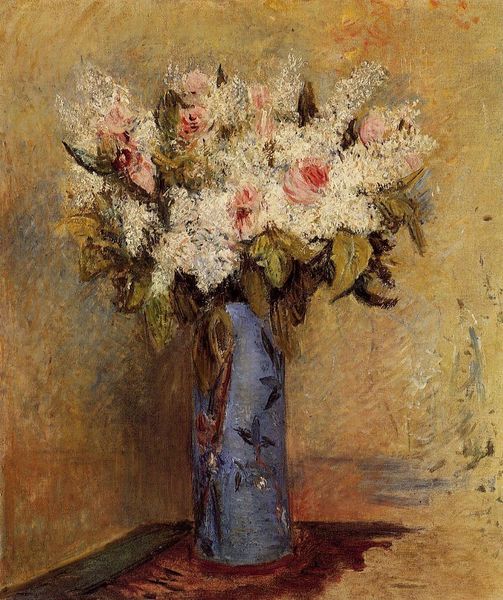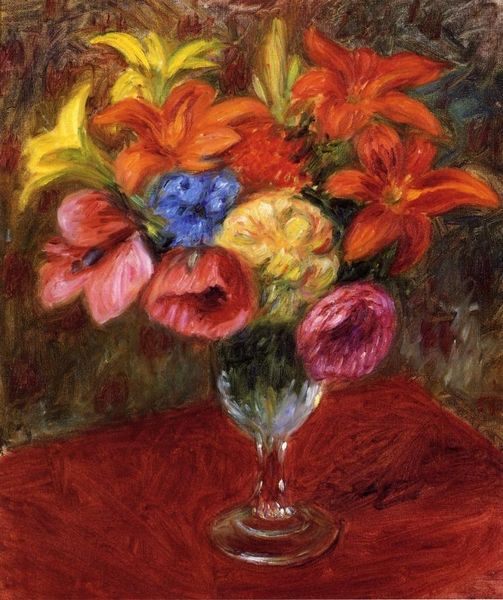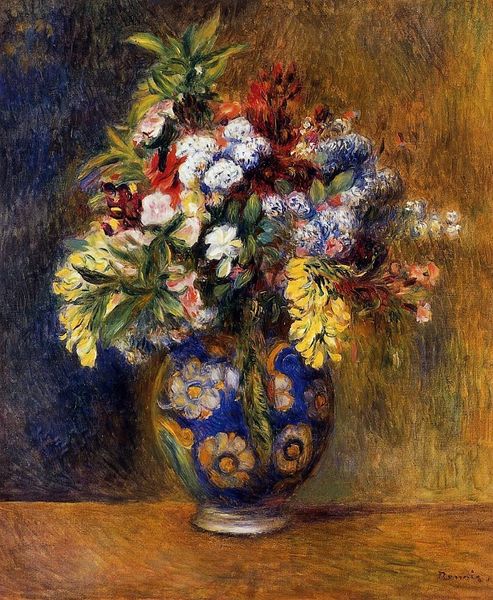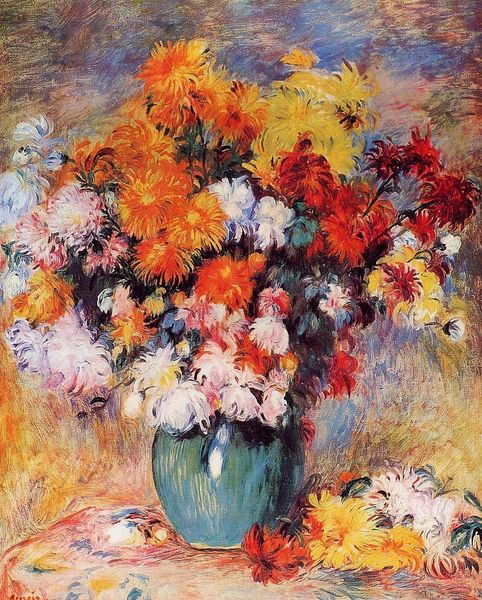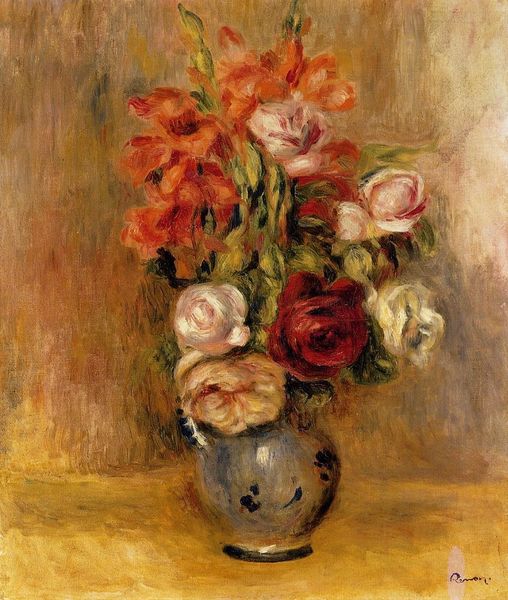
Copyright: Public domain
Curator: Here we have "Anemones and Buttercups," a still life rendered in oil on canvas by Henri Fantin-Latour in 1890. It is currently held in a private collection. Editor: The somber lighting makes this bouquet look almost funereal. Is it just me, or is there something melancholy about those drooping blooms? Curator: Still life paintings during this period were increasingly a vehicle for exploring the complexities of the aesthetic movement, and often considered a feminist act allowing female artist to enter a space previously held almost entirely by males. Fantin-Latour, known for his flower paintings, found considerable success catering to the art market of the time. Editor: Success at what cost? The male gaze reducing nature to décor, masking its intrinsic power and reducing its potential. Are these paintings a reflection or a refutation of late 19th century female repression? I feel like there’s a lot of tension lying just below the surface of that floral arrangement. Curator: While I agree that questions of gender and power are inevitably entangled with artistic production, let's consider Fantin-Latour’s role within the institutional art world. He submitted regularly to the Salon, navigated the established gallery system, and built a reputation through conventional channels. His choice of subject matter—flowers, fruit, domestic objects—aligned with expectations of the market. Editor: Exactly! Aligned with expectations. That very alignment can be interpreted as a kind of… capitulation. In choosing subjects considered 'safe' and 'feminine', wasn't he reinforcing a certain power dynamic? Isn’t his contribution only furthering an antiquated hierarchy? Curator: Perhaps, but the skill with which he captured the nuances of light, texture, and color, speaks to something deeper than mere acquiescence. He elevates the mundane, prompting contemplation. The rich colors, rendered with obvious technical virtuosity, are more than simply pleasing—they draw us into a deeper consideration of time, mortality, and the fleeting nature of beauty itself. And still lives where a large contributor to the formal advancement of painting. Editor: True, it's visually captivating. Maybe it's a conversation starter more than a final statement. Still, seeing these works outside their contemporary lens… it can feel almost unsettling, highlighting social power more clearly than the art itself. Curator: Precisely. And through examining these historical layers, we gain greater insight into both the art and its societal impact. Editor: A potent, uncomfortable beauty.
Comments
No comments
Be the first to comment and join the conversation on the ultimate creative platform.

